I’m willing to bet that many total laymen will easily recognize the Omega Speedmaster. The truth is, when this icon of the Omega marque was launched to the moon, its status as an icon of the watch world was also launched into orbit.
The Speedmaster’s design remains an immovable object, left nearly untouched for half a century of consistent production by Omega, which has made it an incredibly recognizable watch. However, there are distant relatives within the Omega family that you’ve undoubtedly heard less about, but deserve your attention — like the Omega Chronostop. Even serious watch hobbyists and Omega fans may have seen a Chronostop and the real serious ones may even know a bit about its history, but when you dive into its quirks, it’s hard not to wonder why these watches aren’t more popular.
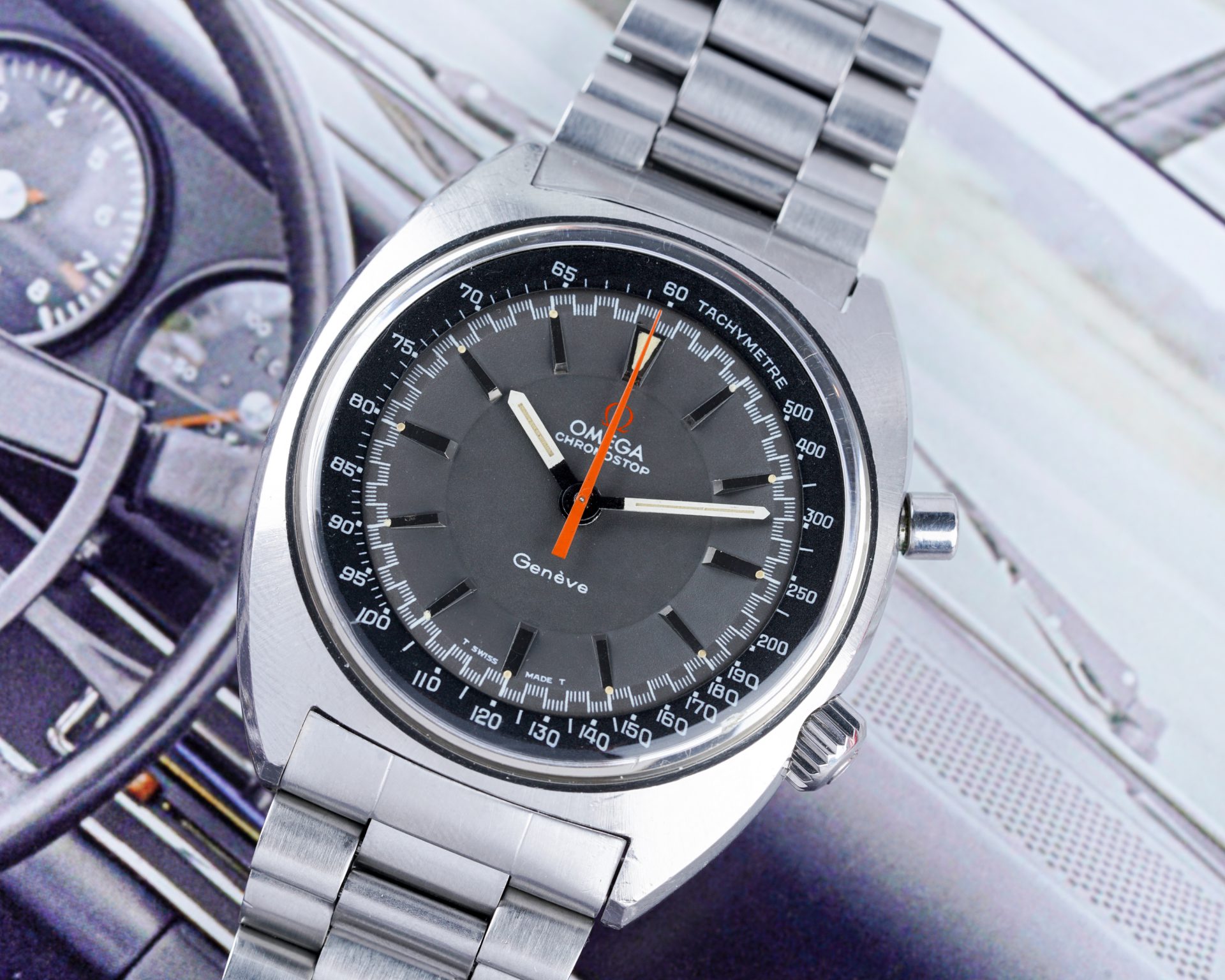

The Chronostop was the official timekeeper of the 1968 Olympic Games, it won top prize for its innovations in the prestigious Fédération Horlogère Suisse competition, and was popular among race car drivers for its 60 seconds timing ability. There’s even a variant that was exclusively produced for the Italian market as well. In 1970, these watches were fitted with a caliber 920 movement (a slimmed down version of the 861) and made available through only two retailers — one of which being Turler, which could be considered the Swiss equivalent of iconic upscale retailer Tiffany and Co. The utility of a 60 second chrono proved extremely useful for racing applications and the dials on some even sported a “racing” pattern designed specifically to aid in its use for these applications. The Chronostop was also produced as a model featuring a dial that was tilted at 90 degrees for better visibility when a driver’s hand was occupied grasping a steering wheel.
Despite its impressive accolades and innovations, the Chronostop references remain orphan models relative to their space-bound cousins in the Speedmaster range. Understandably, we all know about the watch that went to the moon — it was an event that consumed the entire world. But that doesn’t justify how rarely we seem to discuss the stories behind the Omega timepieces that were tasked with remarkable terrestrial pursuits.
Picture it: It’s 1973 and you’re a driver in the IMSA GT Championship in Miami. It’s a blistering hot day and as humid as could be, but the Porsche 911 you’re piloting through the heat survives as its screaming motor is cooled by the rush of the wind produced by the massive speeds its clocking. Your team needs an accurate gauge on your lap times, and it absolutely needs to be down to the second because a second is a lifetime (and a race potentially lost) in sportscar racing. There’s no super computers or broadcast analytics in your car, it’s an analog machine and it’s down to your brain and the accuracy of the tool on your wrist to work it out. What watch are you going to rely on? The Omega Chronostop, with its blood red, high-visibility dial (perfectly matched to the livery on your race car) is a perfect, reliable choice. The same conversations were had by people that relied on the venerable Rolex Daytona (of course named for the race track) and various Heuer Chronographs over the years. However, the Chronomaster was as well-suited as any Speedmaster for the job.
The watches (or tools, I should say) worn by the racers of this period were just a small part of a larger culture of racing. Every detail — from the cars to the Swiss watches and the clothing styles of the era — all come together to make an intoxicating world to explore and preserve for enthusiasts. It’s a culture that endures today, but is of course less analog and relies on the digital innovations of the day. But honestly, we prefer things the way they once were — marriage of human and machine, precision and skill.
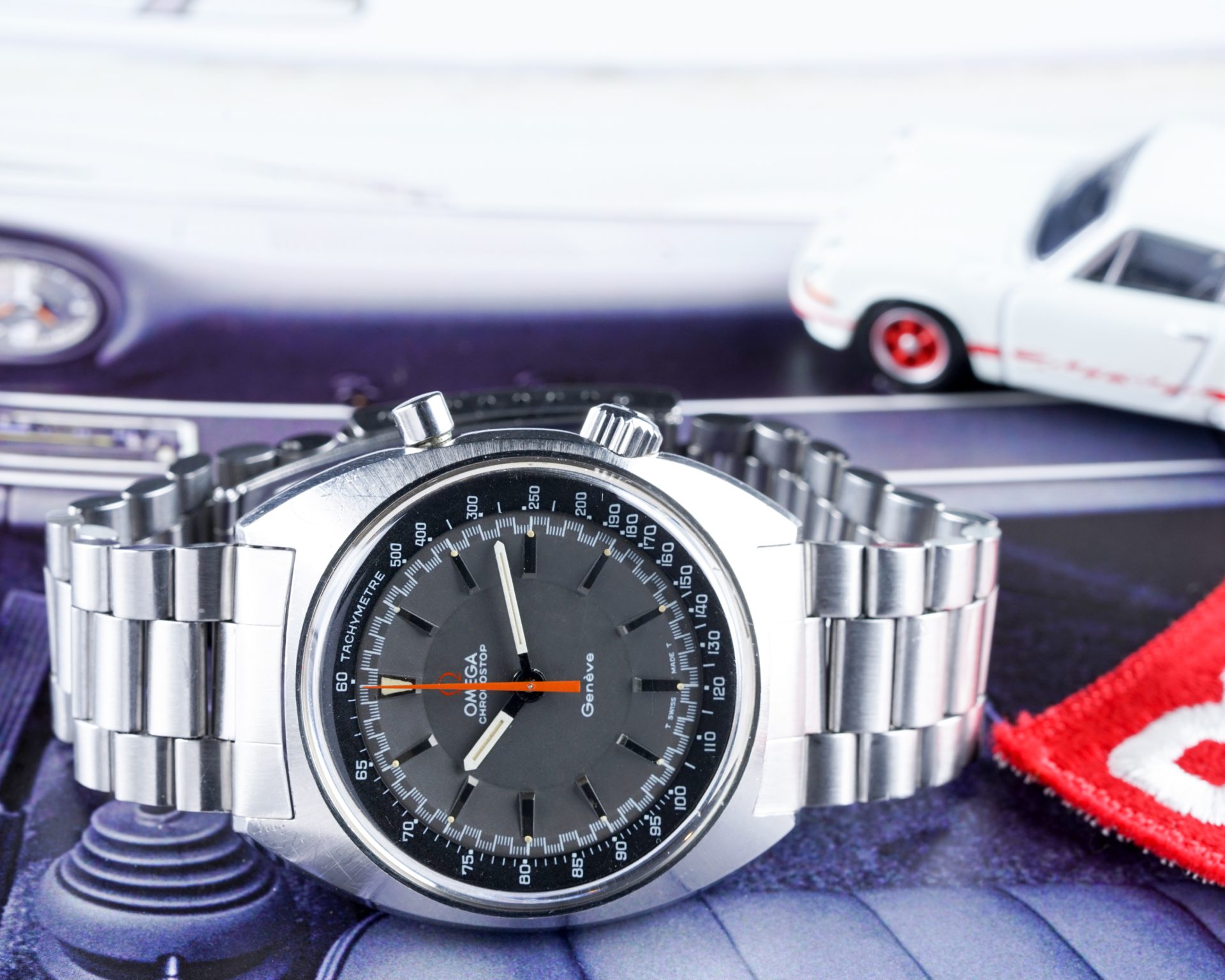
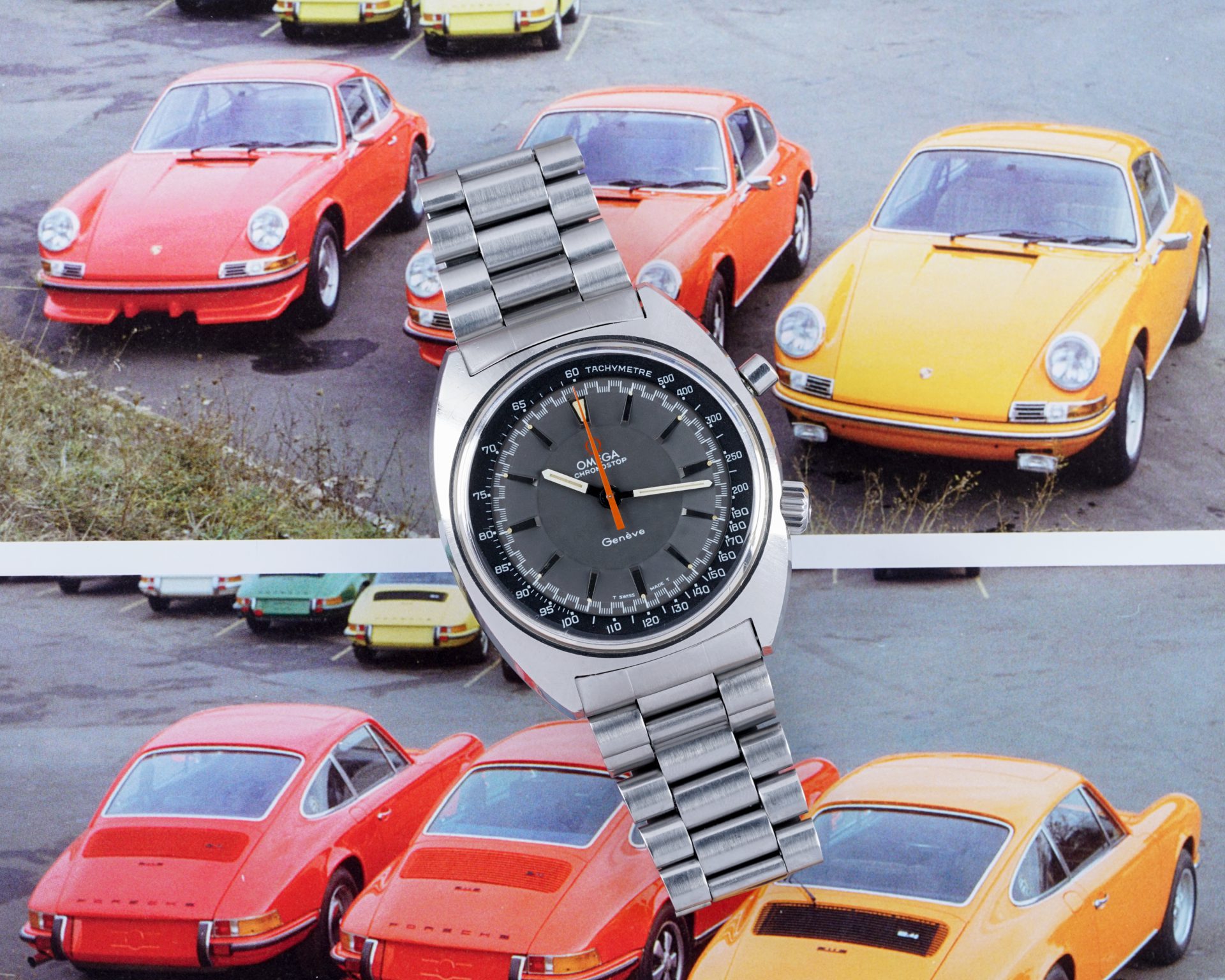
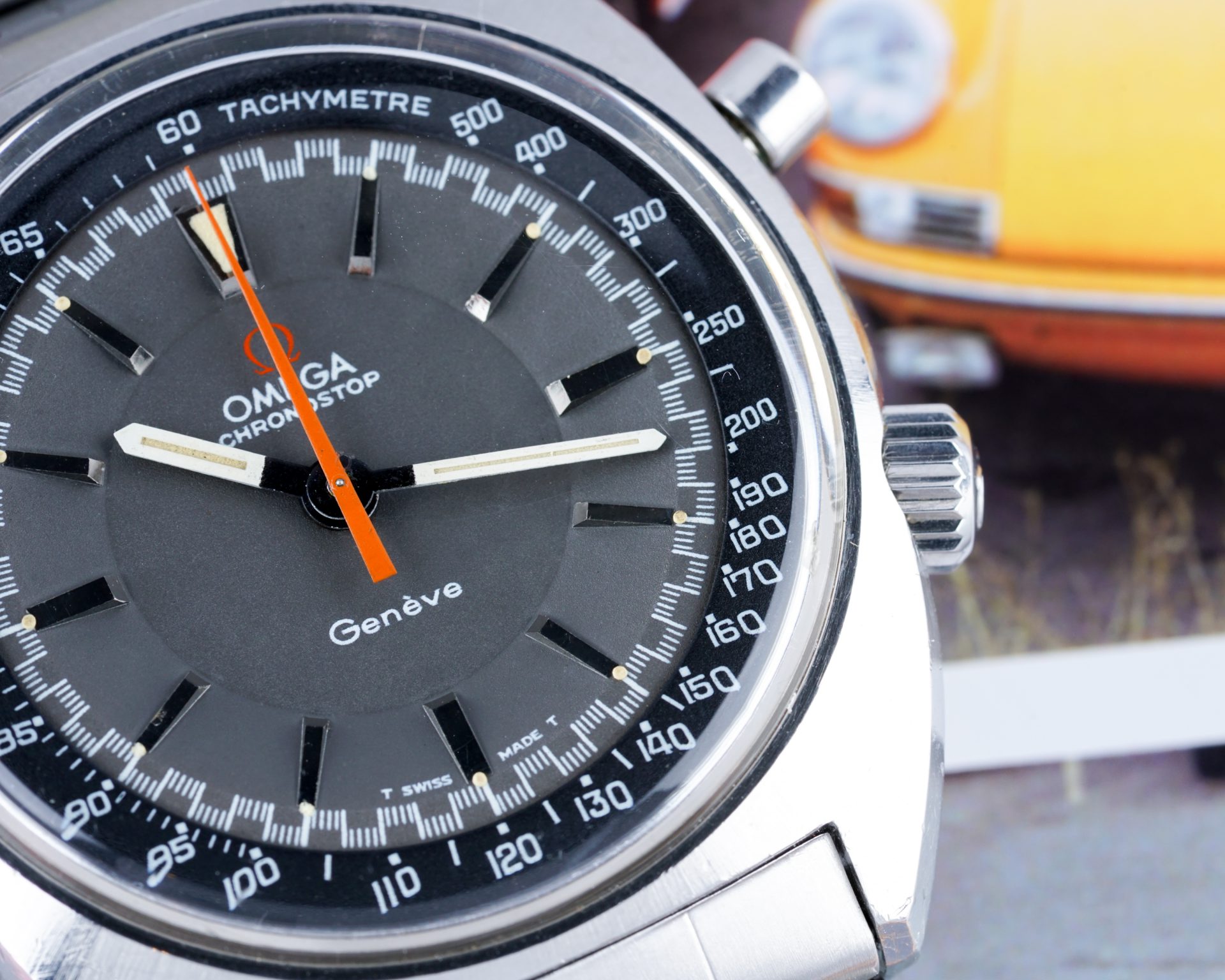
The perfect example of how watches tied-in perfectly and permanently with racing culture is Nina Rindt’s timeless on-track style in the ‘70s. Being the wife of famed driver Jochen Rindt (who was tragically cut down in battle), Nina was quite involved in her husband’s on-track affairs — which was not uncommon in those days. For fans of the golden era of Formula One, Nina Rindt’s iconic style is easily visualized: The Finnish model sported a trademark green hat, carried an Omega stopwatch to time Jochen’s lap times in one hand, and wore a Universal Geneve Compax on her wrist. While it was the stopwatch that captured her husband’s lap speeds, it was Nina’s Universal Geneve that was a direct nod to racing culture and the reference she wore is now referred to as a “Nina Rindt” (and an “Evil Nina” for those that shipped with dark, “reverse panda” dials) in watch collecting circles
In a world where influencers frequently attempt to enter the watch game by sporting fashion watches, imagine how cool it was at the time to watch someone with equal celebrity wearing a Heuer, Rolex, Omega, or Universal Geneve — and actually using it to time their husband’s lap times. Find a better marketing pitch! We dare you.
Universal Geneve wasn’t the only brand to be found on the track. There’s one brand in particular that most enthusiasts associate above all with motorsports, and that brand is Heuer. Heuer has an interesting history — one that’s easy to overlook to those only familiar with their modern history as Tag Heuer. The Monaco is an excellent example: Its design is so distinctly Heuer in its DNA — with its unique, chunky square case that it’s become a staple of Heuer’s line extending well into the Tag Heuer years. Why has this watch remained essentially unchanged after decades of evolution and ever-more contemporary designs from the Tag Heuer brand? Because like the Speedmaster, the Monaco is a brand icon that’s best left frozen in time. It’s also a watch that will always sell in its perfect original form because of its association with actor Steve McQueen, who wore one in the classic 1971 racing film, Le Mans. McQueen was an amateur racer himself and handpicked his Heuer for authenticity after doing his own research and shadowing Formula One and sportscar drivers while preparing to shoot the film. Heuer was the official timekeeper for Formula One racing in the 1970s, and you’d be hard-pressed to not find a Heuer in every trackside picture from the era. These watches were worn by racers, crew members, family members, and anyone closely associated with the racing scene and racing business.
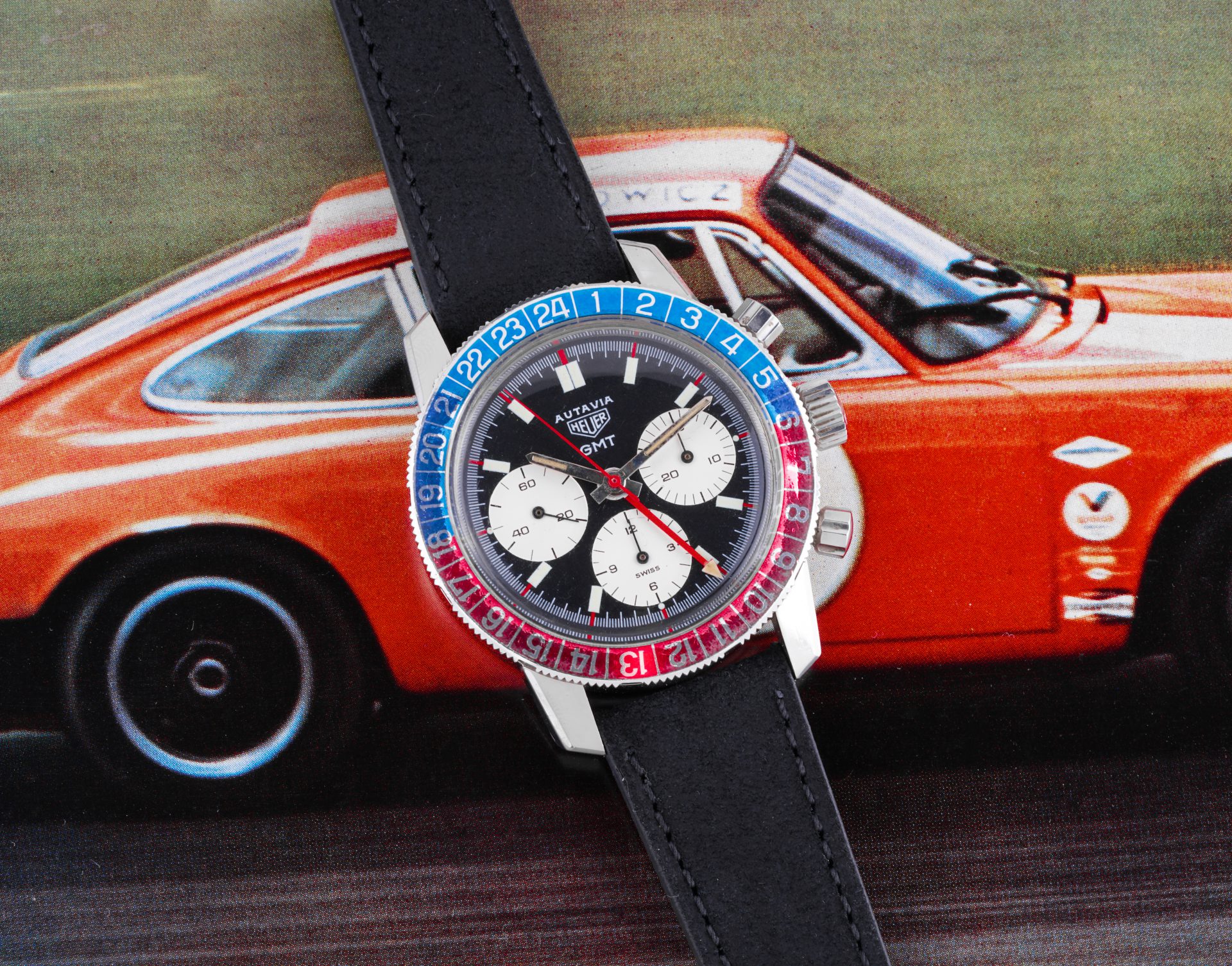
The Heuer Autavia is a great example. An early Autavia reference was made famous partly by the legendary motorsports hero Mario Andretti. Andretti often wore a watch while driving and his collection includes everything from rare Heuers (which he collected as prizes and payment over the years), to Tissots and Yemas. Andretti’s collection embodies the timeless racing aesthetic that he helped define during his years in the sport, and specific references in the Autavia line are now referred to as “Andrettis” by watch collectors.
I’ve found that most watch collectors share a common enthusiasm and romanticism for cars, motorsports, and vintage style. There’s plenty of reasons to buy a Speedmaster or a more celebrated vintage watch, ease of resale and the low risk of investment being two, but it would be a mistake to miss out on the esoteric side of racing-focused horology, with its “Evil Ninas” and square “McQueens.” It might not spark as many conversations, but for those who know and appreciate this delicious obscurity, these chats will undoubtedly be long and enjoyable, and you’ll be proud to wear something unique.

Check out 'Reference Tracks' our Spotify playlist. We’ll take you through what’s been spinning on the black circle at the C + T offices.

Never miss a watch. Get push notifications for new items and content as well as exclusive access to app only product launches.
Sign up for our newsletter to receive updates and exclusive offers